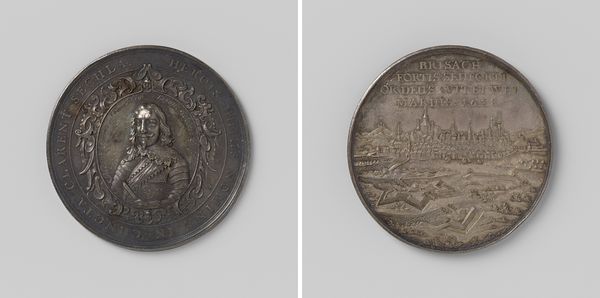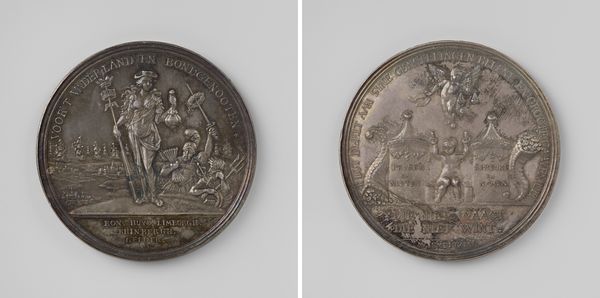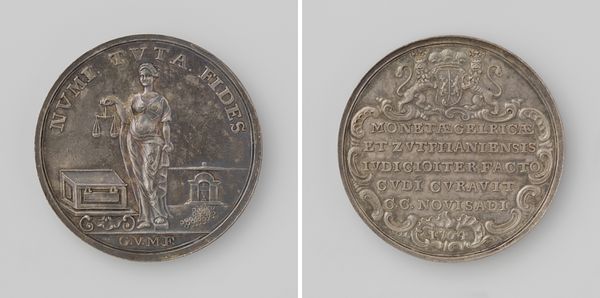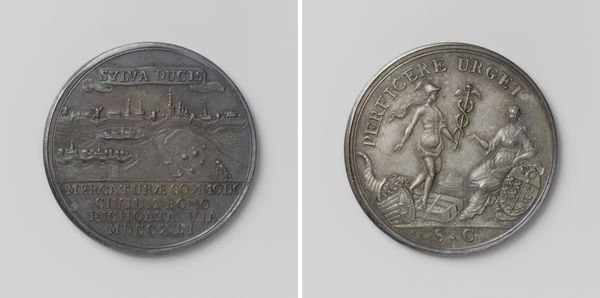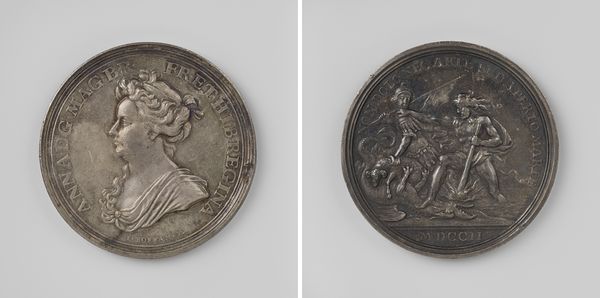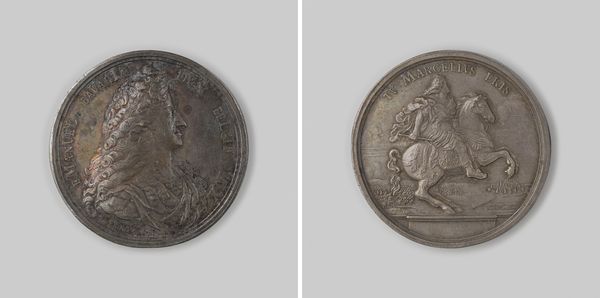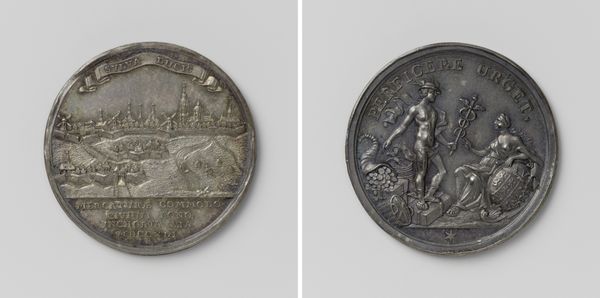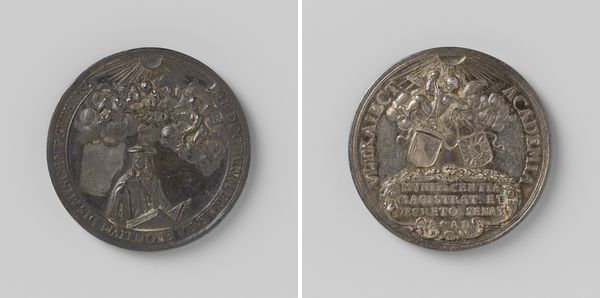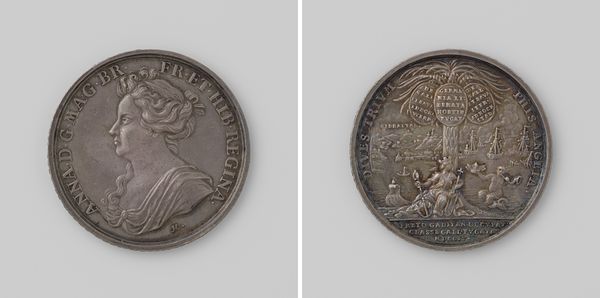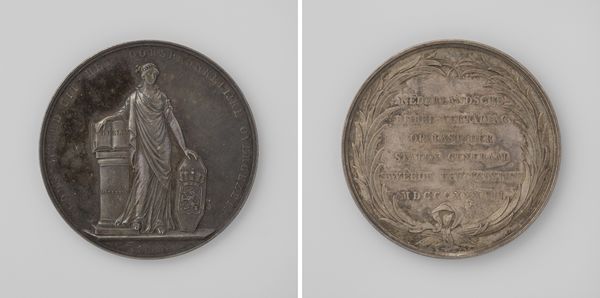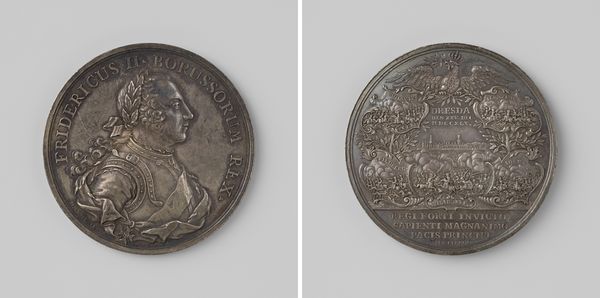
Prijspenning, verleend aan de schilder Johannes Bosboom in 1839 tijdens de tweejaarlijkse tentoonstelling van schilderijen in Den Haag door de Gemeente Den Haag voor zijn schilderij De Parijse kade in Rouen 1839
0:00
0:00
print, metal, bronze, sculpture
#
medal
#
neoclacissism
# print
#
metal
#
sculpture
#
bronze
#
sculpture
Dimensions: diameter 4.7 cm, weight gr
Copyright: Rijks Museum: Open Domain
Curator: This is a prize medal awarded to the painter Johannes Bosboom in 1839, commemorating his painting, "The Parisian Quay in Rouen." Editor: It's fascinating. There’s such a contrast here – the cool precision of the metal with this almost baroque exuberance of classical allegory on its face. Curator: Observe how the medal's design adheres to Neoclassical ideals: balance, clarity, and an emphasis on idealized forms. The seated allegorical figure, presumably representing the City of the Hague, is rendered with a refined linearity that speaks directly to those aesthetic principles. Note also the controlled inscription. Editor: I’m more intrigued by the material implications. A medal like this represents validation but also control. How many people toiled to mine, smelt, and then intricately work this bronze, all in service of bourgeois celebration of “high art”? It seems telling. Curator: The semiotic language is rich. She holds a quill, a symbol of artistic creation, alongside other implements – while the lyre perhaps points to higher intellectual aspirations, doesn't it? The pillar she sits upon—displaying what seems to be the city's crest— further solidifies that authority. Editor: Sure, but look closely at the back! The inscription, "Optime Merito Artifici," meaning "to the artist of optimal merit," almost rings hollow given the intensive labour involved, especially relative to the artist’s individual efforts. Doesn't this emphasis mask something of the social reality and relationships behind artistic production? Curator: I wouldn’t disregard this medal as merely something masking production; more a celebration of skill that speaks through design and choice. And, I think we see both skill and an astute employment of symbolic language. Editor: Point taken. In the end, both the materials and symbolism of such objects give fascinating insight to the values of that era. Curator: Agreed. It really showcases how reward and validation were handled, then manifested as both physical object and social tool.
Comments
No comments
Be the first to comment and join the conversation on the ultimate creative platform.
